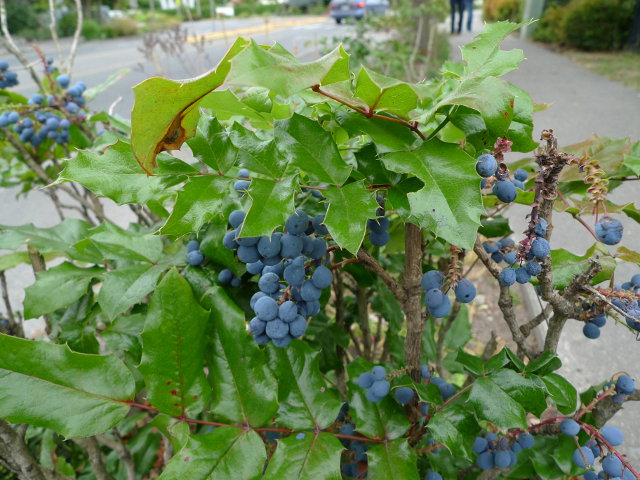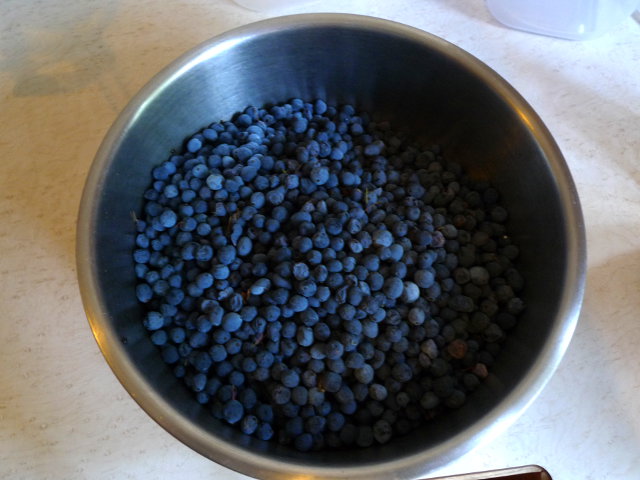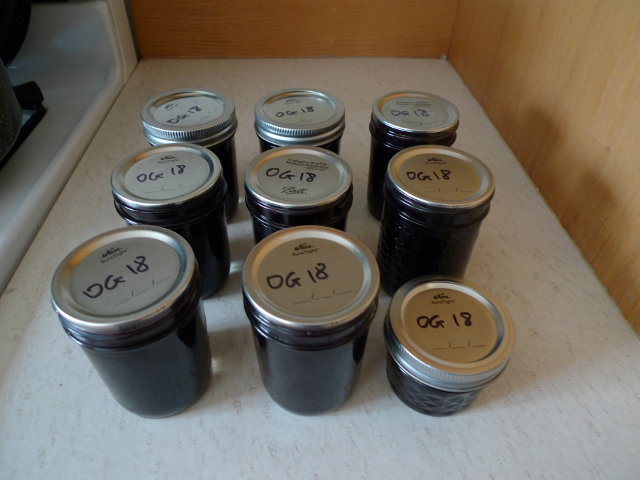Oregon Grape (Mahonia aquifolium)
Published at 12:03 on 22 July 2018



Tall Oregon Grapes (Mahonia aquifolium) are now ripe.
They are edible, but they are also sour, so they tend to be best used as an ingredient for sweetened dishes, rather then eaten as-is. I have however learned that if they are fully ripe (which means not just so dark they are nearly black under their waxy bloom, but actually starting to shrivel), they actually are palatable when eaten plain. For making jelly or jam, however, you naturally want them to be plump and juicy.
There are actually two species of Oregon Grape on the Island, the other one being the Long-Leaved Oregon Grape (Mahonia nervosa). As their names imply, the Tall Oregon Grape is the taller-growing of the two, while the Long-Leaved Oregon Grape has longer leaves containing many more leaflets. The two also grow in different environments: the Tall growing in open, sunny spots and the Long-Leaved growing as an understory plant in forests.
Of the two, it tends to be easiest to make harvests of the Tall Oregon Grape’s fruits, because it tends to fruit more heavily than the Long-Leaved Oregon Grape.
The inner bark of both our Oregon Grapes is bright yellow, due to the presence of the alkaloid berberine, which has long found traditional use as a yellow dye. Berberine-containing extracts of these and related plants have also been used traditionally for anti-fungal, anti-inflammatory, anti-fever, and other properties. This compound is currently the subject of mainstream medical research; it has already been demonstrated to be therapeutic for diabetes.
